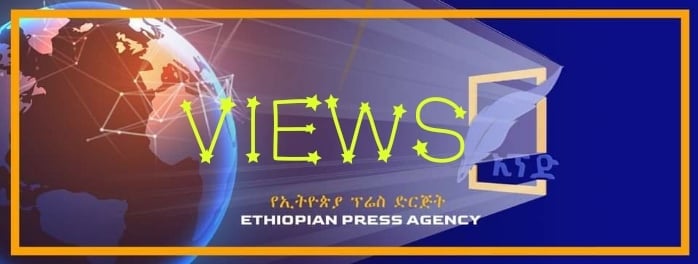
BY GETACHEW MINAS
The success of any type of development depends mainly on its participatory nature. It should involve both male and female representatives in setting goal and objectives. Their involvement in the preparation and implementation of development programs and projects guarantees success. The existence of gender gaps is a sign of failure in the process of execution. It is, therefore, imperative to examine causes of gender inequality from different angles. Focus should be given to the study of gender participation in education, health, employment and political participation in Ethiopia. Attention and emphasis should be directed to the challenges and obstacles of gender equality in different parts of the country.
Assessing the legal and policy frameworks of the government on gender is crucial. Gender equality is important for all kinds of development in Ethiopia. Undoubtedly, the gender factor underpins development in the country. It is understood that the goal of development cannot be attained without the component of gender. It is evident that exclusion of women in development has rendered their development efforts futile. If a country minimizes the gender gap, it will have a better chance to develop and alleviate poverty. It is reported by WB that promoting gender equality is a necessary precondition for effective economic development.
Economic policies and programs that fail to consider gender inequality may not address disparities between males and females. Such policies will have limited effectiveness and serious cost implications to the society. Women are still subjected to unacceptable and objectionable conditions that terminate their lives. They may face early deaths during pregnancy, civil conflicts and in other horrible situations. This implies that gender and development is important because it takes in to account the most fundamental aspects of lifesuch as health, education, decision making, leadership, peace building, violence against women and economic and political empowerment. There are four goals of the Millennium Development Goals (MDGs) that are directly related to gender: achieving universal primary education, promoting gender equality and the empowerment of women, reducing infant and child mortality, and improving maternal health.
Gender equality plays a role in attaining the goals related to poverty reduction and eradication of hunger. It is also crucial in combating HIV/AIDS, malaria, and other diseases. Gender equality ensures environmental sustainability. It facilitates the implementation of the MDGs. Studies indicate that resources in the hands of women benefit children with nutrition, clothing, and schooling. Female education has been shown to have beneficial effects on child health and education. If women are empowered the beneficiaries are children. This leads to human-capital formation which contributes to growth and development. Thus, women are exclusively targeted to benefit from several types of credit programs.
Gender equality forms the basis of growth and development. However, women are not equally involved in development as men. In the developing countries, the position of women, relative to men, is lower on some indicators of development such as literacy, education, nutrition, income, employment. In the developing countries, women suffer from the burden of household labor, child rearing, and food production. They work for longer hours for smaller income. Improvements in the livelihood of women are highly dependent on the efficiency of the economic performance of the country.
Vulnerability of women: Women account for half of the Ethiopian population and are more vulnerable than men due to many economic and social factors that work against them. Economists have tried to explain the causes and effects of development on gender. In most societies, men are economically and socially favored thereby creating gender inequality. The existing gender inequality often reinforces male superiority over inferiority of women. “Culture and tradition” is often used by men to justify practices that constrain women. Gender discrimination is the systematic, unfavorable treatment of individuals on the basis of their gender. This practice denies women their rights, opportunities or resources.
Globally, women are treated unequally and lesser value is placed on their lives because of their gender. Differential access to power and control of resources is central to the discrimination of women in all institutions. Women’s lack of representation and voice in decision making bodies in the community and the state perpetuates discrimination. They are denied access to public services, such as schooling and health care. According to H. Reeves and S. Baden, women also suffer from discriminatory laws. There are different explanations for the legal status of women in the society or for gender inequality. These are explained using economic modernity, cultural modernity and empowerment, as indicated below.
Economic modernity is the process of economic development that contributes to democracy and gender equality. This is central to the eligibility of women to social power. In this perspective, increased economic development is associated with broad based distribution of educational and occupational opportunities to women. Access to these opportunities increases women’s chances of professional development. This creates a larger pool of women eligible for political power. Higher levels of economic development bring more social services to societies and to women. In particular, reducing the burden of child bearing and domestic services from women is crucial for social development.
Cultural modernity is the conversion of economic development into a cultural process of human development. It is believed to bring freedom of self-expression that emphasizes human dignity, self-respect and self-esteem for all, including women. This orientation of freedomdevelops a rising expectation targeted at making elites responsive and inclusive. This paves the way for increasing women’s empowerment throughout the society, including the public offices and parliament, as in Ethiopia. This reflects changes in survival constraints and in human development and social modernization. Changes in modern Ethiopian societies are conducive to women’s empowerment that establishes links between cultural modernity and gender equality. These developments are bound to reduce the vulnerability of women in Ethiopia.
Values of gender equality: Gains in gender equality are most dramatic in countries with high levels of development and strong social values. The initial stage of women’s empowerment is gained with economic development. The next stage of this empowerment is buttressed with cultural development. Historically, the trend in social development is dependent on cultural institutions that affect the advancement of women. The emergency of these institutions depends on social policies that favor women. These policies are, however, circumscribed by tradition, religion, and other social factors. Religious heritages have positive or negative influences on the status of women in a given society.
Some traditions have practices that are “favorable” to democratic values, respect for the individual, reciprocity and mutuality that accommodates the women, irrespective of race, color or origin. Traditional units that are restrictive of women’s development such as the family and the church lose their authority with modernization. Also, individuals place greater emphasis on rationality and individualism. R. Inglehart and C. Welzel, found positive relationships between “secular and rational” values for women’s empowerment. Policy on women may affect the potential gender equality in particular societies. Elites and dominant political groups open the system of political representation to politicalgroups, including women.
Countries that had the tradition of political exclusion of women are now likely to have stronger institutions for political inclusion. Studies establish a positive link between earlier suffrage, the right to vote in political election, and women’s empowerment in parliament. Those people who have participated in free and fair political elections tend to accommodate the participation of women in political, economic and social activities “without” any inhibition. Even if there is the opportunity to actively participate in these activities, women in some societies are culturally inhibited from venturing in public affairs. At the beginning, there may be a few “exemplar” women who spearhead the cause of women. It is only a question of time before they are engulfed by women that are late comers to the stage.
Research by N. Hirschman confirms that a key barrier to women’s full social inclusion and autonomy has been the institutional arrangement that restrict the role of the state to undertakedomestic responsibilities. In developed countries, the welfare policy has expanded the scope of state supported childcare. The leftist political parties have identified the potential of women to seek and win political offices. They recruit women and adopt strategies that bring more women candidates to leadership positions. They devise the means to “empower” women within the party and in the election process.
Conclusion: Institutions may facilitate or deter gender equality in Ethiopia. The degree to which women participate in the political, economic and social activities of the country determines the depth of their involvement. It may be shallow or active participation. In the former case, it is only a “symbolic act” that swindles scams and cheats innocent women with promises, assurances, pledges and declarations. Later on, these pronouncements, statements and announcements all begin to fall on deaf ears of wretched women who gain nothing but empty promises.
Gender entrepreneurs, sharks, and educated but power mongering women “play with fire” in front of women who suffer from all kinds of deprivations. They pretend to represent them only until they have satiated their hunger for power. They use the wretched women as stepping stones on the long stair to power. Once in power, like their male counterparts, they believe that they have achieved the ultimate end in life, which is material enrichment. Politics has been the “shortcut” to wealth, prosperity, affluence, and fortune in Ethiopia where leisure in place of work had been given prominence in the state apparatus. Surprisingly, the working people of Ethiopia have happily paid taxes that financed such as a political structure and its paraphernalia.
The politics of pauperization will be on the rise if unchecked. The government may wish to eliminate or reduce gender inequality through positive and people centered development programs. But, the question is the quality of implementation of these programs by the designated agencies. Let Ethiopian women participate more in the identification, design, and implementation of development projects. They are good at watching out and fighting against gender inequality!
Editor’s Note: The views entertained in this article do not necessarily reflect the stance of The Ethiopian Herald
THE ETHIOPIAN HERALD AUGUST 3/2021



